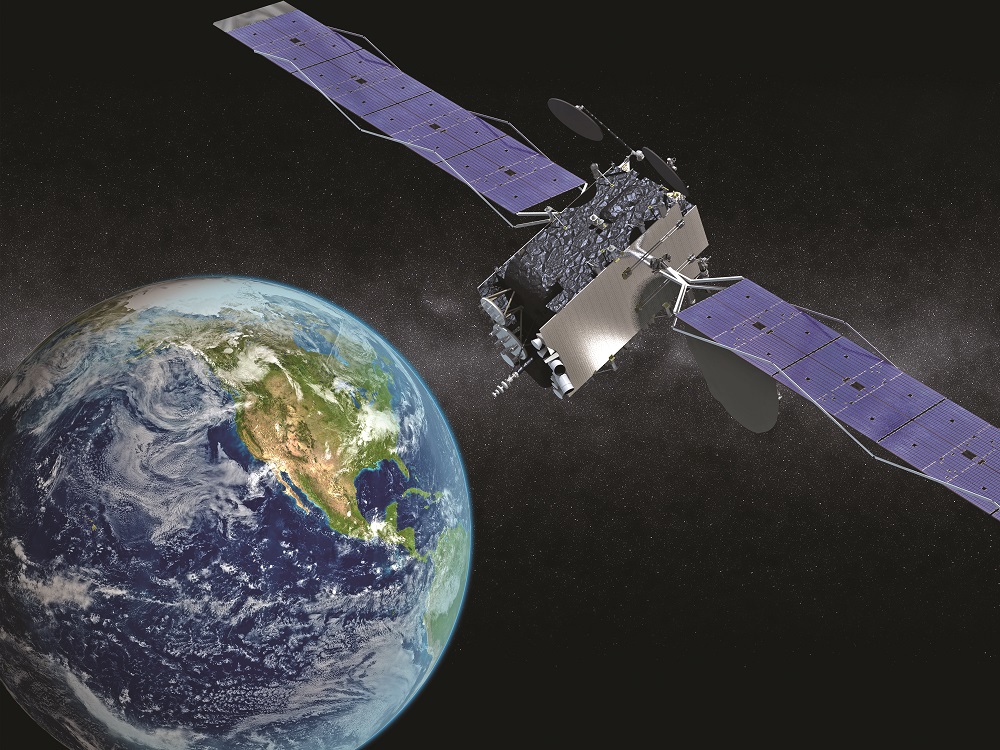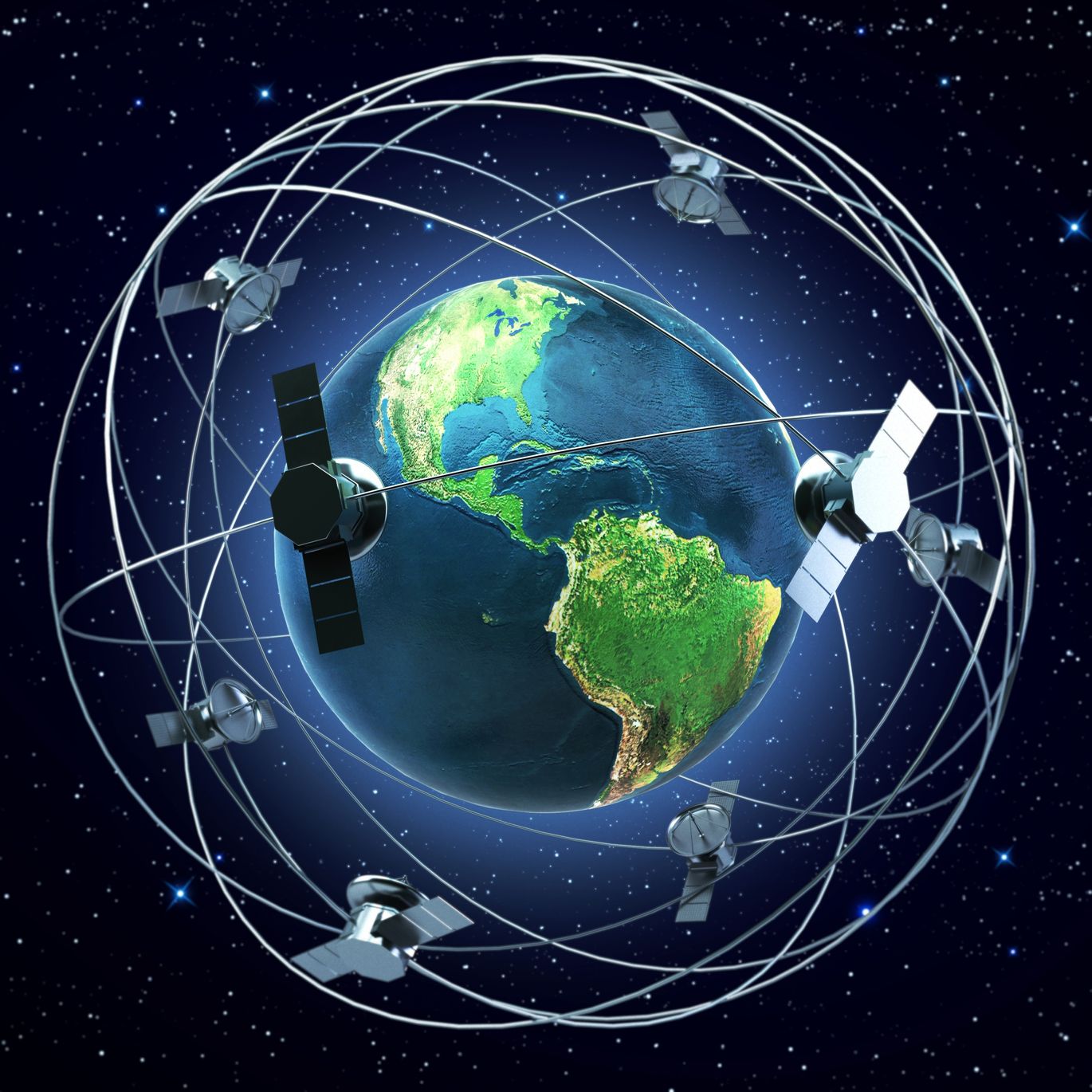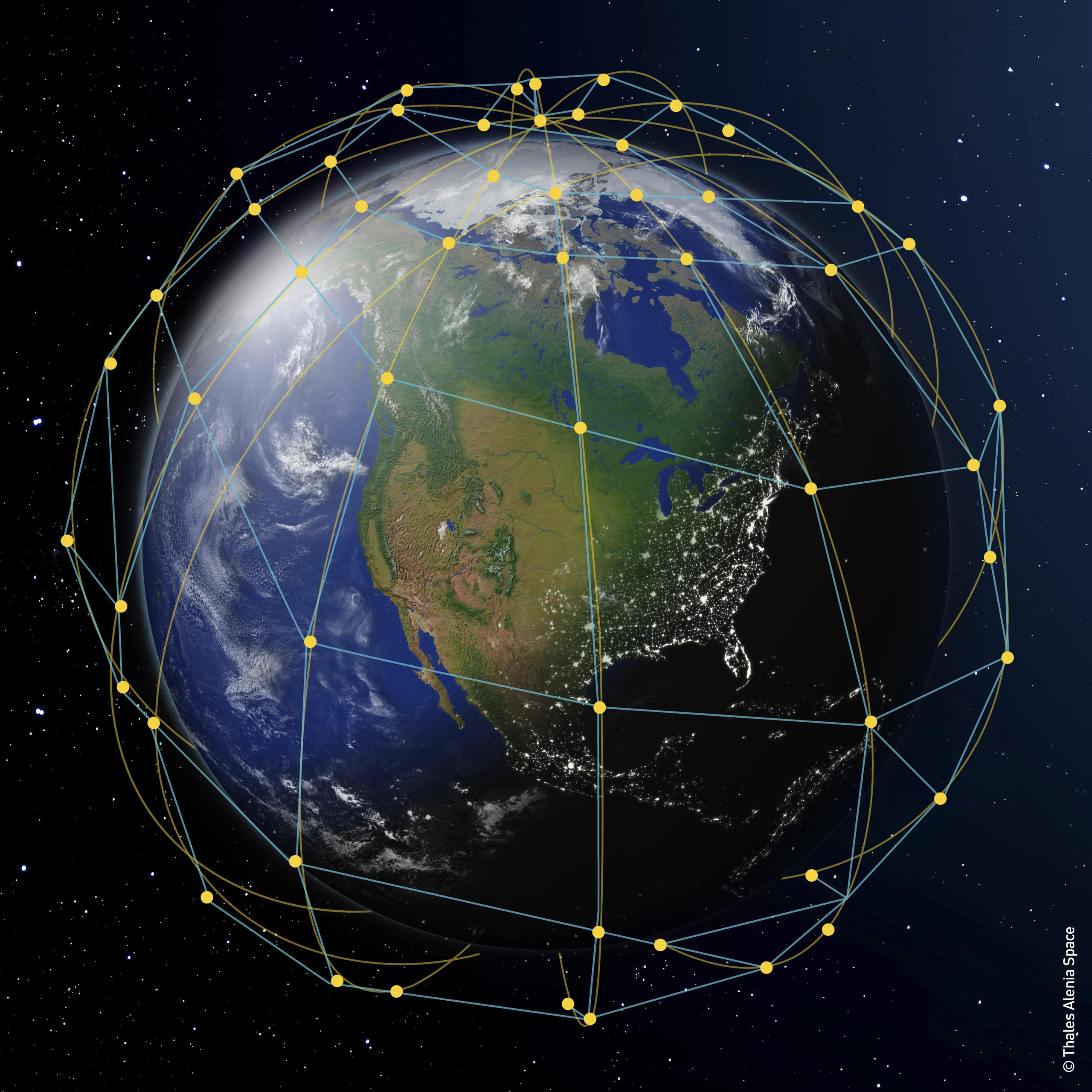TECHNOLOGY FOCUS
This 5-day introductory programme is designed as a companion workshop to course 023 Satellite Communication Systems programme and looks specifically at the technical, commercial and functional dynamics of the new high count LEO and MEO constellations and ways in which they can and will add value to existing and future GSO satellite systems.
The GSO satellite sector is undergoing substantial evolution. Technical evolution includes high throughput and very high throughput hardware platforms coupled to new beam forming and beam shaping capabilities. Commercial evolution includes integration with existing and new LEO and MEO constellations including inter constellation RF and optical switching and mechanisms for capturing value from LEO based multi spectrum sub metre imaging systems, enhanced GNSS service including NGSS PNT and integration and coexistence with other high power(including radar) and low power (Wi-Fi and Bluetooth) radio systems.
LEO constellations have satellites that scale in size and weight from nanosatellites weighing small fractions of a kilogramme to Cube SATS weighing a few kilogrammes to the International Space Station (450 metric tons). These satellites and space platforms have communication payloads that span from VHF to V band. Co sharing of C band between 5G and satellite TV and aviation systems and co sharing of Ku band and Ka band between 5G and LEO and MEO and GSO has introduced spectrum coexistence issues some of which still need to be resolved but also re-use opportunities that could change the delivery economics of terrestrial 5G and 6G and new and existing satellite systems.
Rocket technology developments and materials and manufacturing innovation are changing the overall economics of getting into space and staying in space. Novel collision avoidance using on board multi spectral imaging can be co shared with wide field of view optical systems integrated with low and high-power collimated laser links for inter satellite, inter constellation and ground to space and space to ground feeder and service links. In parallel, AI and autonomous station keeping potentially reduce debris risk and insurance cost.
Smart antenna beam forming and beam shaping technologies are addressing up link and down link spreading loss issues and opening up opportunities for vertical and horizontal frequency re-use. In parallel laser and lens quality improvements are increasing the performance gap between RF and optical transmission systems.
Intersatellite switching enables low latency long distance ‘faster than fibre’ connectivity for international added value applications such as high frequency trading. Control of the end-to-end channel and known latency including deterministic second order delay variability allows for super secure authentication and encryption.
Direct to smart phone technologies are also being deployed based on high gain LEO phase array antennas. Standards are evolving to accommodate round trip times and Doppler.
These technologies and techniques are addressed in depth over the five days. A case study is introduced on the first day and developed through the week as a joint project between delegates and the tutor.
The case study varies depending on the mix of delegate interests but as an example on the last course we analysed an FCC order and authorisation filing. This awarded additional (lower) orbit rights and additional (higher) frequency allocations to an existing NGSO (non-geostationary) constellation.
We studied the interference management issues and related measurement and monitoring needed to ensure enforcement of ‘NGSO to GSO’ and ‘NGSO to other’ protection ratios.
The brief widened through the week and the outputs/conclusions are summarised at the end of this document.


COURSE CONTENT
View the daily schedule below. This course is a introduction to the subject, explaining the functions but not the design of low and high-count LEO, MEO and GSO satellite constellations.
WHO SHOULD ATTEND
- Technical, engineering and marketing teams from the LEO, MEO and GSO operator community and their supply chain partners.
- Technical, engineering and marketing teams from the LEO, MEO and GSO operator community wishing to evaluate 5G and 6G satellite integration opportunities and the dynamics of RF and optical integration.
- Technical, engineering and marketing teams from the 5G and 6G community wishing to explore and test the changing technical and commercial dynamics of the ‘New Space’ industry and the challenge and opportunities of the emerging ‘new space’ technology and marketing model for 5Gand 6G operators.
- Space scientists wanted to understand the space science and space measurement capabilities of these new constellations.
- Anyone engaged with 6G research and development including RF and optical terrestrial and space hardware and software testing.
- Engineers and policy makers from the regulatory community.
- Competition policy specialists and experts.
- Financial analysts wanting to understand the technology economics underpinning the transition from earth to space based value and RF to optical value.
- Defence analysts wishing to qualify and quantify the sovereign security implications of high count LEO and VLEO constellations and the impact of the RF to optical transition on earth and in space.

Daily Schedule
Day 1
Session 1, 08.30-10.00
Sixty years of Satellites, 100 years of telecoms
Sputnik and Cuba, Apollo and the Space Shuttle, Cuba, The Star Wars Speech, Iridium as an inflection point, Teledesic and Skybridge, lessons learnt, lessons forgotten, orbit rights, spectral rights and the system architecture legacy. The new NGSO’s. No one to Everyone, Nowhere to Everywhere, Nothing to Everything.
Session 2, 10.30-12.30 (with short break in the middle)
The Race for Space Spectrum.
The ITU- Longitude for terrestrial, latitude for space, altitude, the need to model, measure and manage high count multi orbit constellations, new stakeholders, IATF, Space Science, NASA, Space Defence Agencies, spectrum and standards including CCSDS space standards (RF and optical), VHF to V band, old and new options, the 5G to 6G band plan, FR1-6, what happened to 5G millimetre and why, implications for the 6G and satellite and space science community, lessons from the past, Digital Dividends 1,2 and 3, non-harmonised band plans, L band and Light Squared, S Band, airport radar and altimeter radios, 5G and satellite TV, 6G and satellite TV (Ku band). Modelling, monitoring, measuring and managing multi orbit constellations including downlink interference to VLEO, sub orbital, HAPS, aviation, UAV and drones and terrestrial (5G and satellite including earth stations) and up to MEO and GSO, Earth Stations In Motion, FDD and TDD coexistence, the big question, RF or optical, all optical GSO as an emerging option. RF C Band versus Optical C Band (4.5 THz of pass band) and Super C Band (7.5 THz) as examples of available pass band options. RF channel bandwidths (from 12.5 KHZ to 100 MHz) versus optical DWDM (25, 50 100 GHz). These topics are revisited in more detail later in the week.
Orbit Options
Existing (economic) LEO orbit options, low band LEO (300-400 Km), V-LEO (100- 300 Km), mid band LEO (400-700 km), high band LEO (1200 km), LEO/MEO/GSO/HEO hybrids, relative costs of getting to and staying at lower and higher orbits, orbit maintenance costs, station keeping and collision avoidance, end of life deorbiting, matching orbit choices to ground tracks, regulatory implications including assessment and allocation of orbit and RF spectrum rights and coordination with other entities co sharing or passing through high count LEO constellations. Precision orbit insertion and orbit raising, the counter intuitive relationship between speed and orbit height. Prograde and retrograde and counter rotating orbits. Cost, risk and other considerations.
Session 3, 13.30-15.00
RF and Optical Link Budgets
RF versus optical in space, GSO to GSO, LEO to LEO, LEO and MEO to GSO (GSO relay, TDRS and RF and optical EDRS as examples), RF versus optical space to earth and earth to space, laser and lens quality as part of the optical budget, pointing acquisition and tracking as part of the link budget, vibration as part of the link budget, RF noise and optical noise, similarities and differences, RF and optical gain, RF and optical filtering (addressed in more detail later in the week), RF and optical stability, sensitivity and selectivity. RF versus optical networks in space. System performance comparisons.
Direct to smart phone link budgets
Principles of flux density as a product of orbit height, TX and RX power and antenna gain in space off setting path loss including slant loss (low elevation angles).
S band and 8 km radius cells (2/4 M/bit/s throughput and 2000-4000 voice calls) as a technical and commercial option. Direct to smart phone regulatory and competition policy considerations.
Session 4, 15.30 -17.00
Latency
Principles and practice, user plane versus control plane, RF versus optical, advantages of optical in space over terrestrial and subsea fibre. IP over RF versus RF over optical- is there a difference?
The global wireless optical network (G-WON) as an emerging trend.
Introduction of the case study
Day 2
Session 1, 8.30-10.00
Launch technology
Efficiency gain with bigger rockets, cost gain with bigger rockets, the economics of reusable rockets, single stage rockets as a continuing possibility, liquid fuel options, solid fuel options, hybrid options, launch and re-entry licensing and other considerations (environmental, health and safety). Rocket politics.
Session 2, 10.30-12.30 (with short break in the middle)
Satellite technology
Satellite propulsion for orbit raising, collision avoidance and deorbiting, chemical options, ion thruster options (electric satellites), space propulsion (chemical and electric), optical satellites and optical payloads (also covered in payload innovation), autonomous collision avoidance and integration with pointing acquisition and tracking for RF and optical inter satellite inter constellation and earth to space and space to earth RF and optical links.
Antenna Innovation
RF Antennas
RF phase arrays, performance trade-offs including impact on RF link budgets at lower elevations. Bandwidth constraints, calibration and testing, conformal antennas and flat panel arrays.
Optical antennas
Lens quality metrics and collimation. Strehl Ratios and M2 measurements. Single boresight and dual boresight options (beacon channel support).
Session 3, 13.30-15.00
Terrestrial Fibre
Optical backhaul in 5G and 6G networks, passive and active optical networks, potential re-use in free space optical links in space, radiation, out gassing and heat dissipation as considerations for LEO, MEO and GSO. Summary of terrestrial optical components that can be used in space. Laser and other light sources, lenses, optical amplifiers, filters, mixers. Single-mode fibre versus multi-mode fibre.
Session 4, 15.30 -17.00
RF over Fibre
Satellite Ground segment and 5G NV-IOT examples of RF over Fibre (RF-OF). Emerging space applications.
Day 3
Session 1, 8.30-10.00
Materials Innovation
Requirements for the RF millimetre band and sub millimetre band for space, enabling materials.
Requirements for optical C band in space, enabling technologies.
Manufacturing innovation – subtractive and additive manufacturing, 3D printed rockets and rocket parts as an example.
Session 2, 10.30-12.30 (with short break in the middle)
Consultative Committee for Space Data Standards (CCSDS)
RF and optical standards for satellite and space, ITAR, sovereign security considerations including inter-working and inter-operability.
Session 3, 13.30-15.00
UAV, Aerospace and Automotive – LEO, MEO and GSO integration challenges and opportunities.
Session 4, 15.30 -17.00
Open session- delegates either chose a topic to be addressed in additional depth or work with the tutor on the case study.
Day 4
Session 1, 8.30-10.00
Ground Station Innovation
Implications of high count NGSO and low elevation RF from space, uplink and downlink asymmetry and traffic modelling, impact of EO and space data on RF downlink provision from VHF to V band, GSO as a relay layer from MEO and GSO, optical ground stations as the next big thing?
Session 2, 10.30-12.30 (with short break in the middle)
Payload innovation including EO multi and hyper spectral imaging, RF Trilateration and SAR
Space science in space LEOS as a space science platform
GNSS and PNT services from LEO
LEO and quantum key distribution
LAPS and HAPS
LEO RF and optical connectivity to HAPS and aeroplanes including In Flight Connectivity (IFC) and Air Traffic Control and Space Traffic Control Systems
LEO RF connectivity to drones from below and above
RF interference and regulatory considerations
Session 3, 13.30-15.00
Sub Orbital RF and optical system requirements
Session 4, 15.30 -17.00
Wi-Fi and Bluetooth followed by more work on the case study project.
Day 5
Session 1, 8.30-10.00
Space Weather
Debris mitigation
Session 2, 10.30-12.30 (with short break in the middle)
Inter-agency regulation, touch points and tension points.
Session 3, 13.30-15.00
Technology enablers and Technology Transition
We revisit and complete the study project capturing the conclusions from the discussions and debate that have taken place through the week. This is the summary from the last workshop
‘5G networks and other terrestrial radio networks are working close to the Shannon limit. This means that opportunities to improve power and spectral efficiency in 6G networks are constrained with margin growth only realisable from new vertical markets which are hard to find and expensive to develop. Optical networks using free space optical links are working well below the Shannon limit and therefore have substantial performance improvement potential. An example is the transition from on off keying or simple intensity modulation to phase coherent transmissions (WDM and DWDM). There is no need to be spectrally efficient at least for the foreseeable future (7.5 THz of bandwidth in Super C Band potentially divided into 25 GHz channel bandwidths). The main benefit of using optical in space is power efficiency. You can go further using less power .As with guided media, digital signal processor bandwidth is the underlying technology enabler though laser and lens quality are also important as are positioning acquisition and tracking when linking fast moving objects in space. The same potential transition can be observed in terrestrial and non-terrestrial computing storage and server systems with optical computing as a mechanism for improving energy consumption and reducing energy cost. Putting hyper data centres into space is not presently economic but could be if they were all optical with optical being in turn a transition to quantum in thirty to fifty years’ time. Present day terrestrial networks can add bandwidth by deploying more fibre and more 5G and 6G base stations but this is costly and energy intensive. Maintenance costs of fibre are significantly lower than copper but other operational costs, digging trenches, real estate and energy, are increasing. In space, adding bandwidth does not increase energy cost or real estate cost (there are no landlords in space).Hardware particularly optical hardware can be made to last longer in space and more efficient propulsion systems mean that we can stay longer in space and work closer to the Karman limit (>100 km V-LEO as the potentially most efficient transport layer in space). For GSO, present occupancy is limited to 500 satellites due to RF protection ratios but all optical satellites could provide an entirely new transport layer at 36,000 km. In parallel, the other things we can do from space, particularly earth observation and space observation from space can be shown to have social, economic, economic benefits and are probably essential to future sovereign defence and security. Optical, multi spectral and hyperspectral imaging, Synthetic Aperture Radar and RF trilateration are three contemporary examples. Space science is presently focused on large radio and optical telescopes (Hubble in LEO, JWST at the earth moon L2 Lagrange point) but there are potentially Exabyte’s of space science available from high count NGSO constellations. This suggests some terrestrially based assets including radio and optical telescopes may be better used for other purposes in the future. An optical telescope on a high mountain provides an almost perfect dark path for hyper broadband earth to space and space to earth connectivity. The two largest nations on earth are going to the Moon and Mars. The Artemis accords and parallel China space cooperation initiatives underpin and are essential to that ambition but are dependent on continuing technology and engineering innovation. All of the above increases the rate at which terrestrial based added value transitions to space based added value and RF added value transitions to optical value.
Coffee and Close and Certificates
‘I had high expectations for this course and they were exceeded’ (TRA Oman)
Mr. Varrall has published books that are recommended references. The references is not required for this course.
5G Spectrum and Standards (Artech House, 2016) ISBN: 9781630810443
5G and Satellite Spectrum, Standards and Scale (Artech House, 2018) ISBN: 9781630815028

